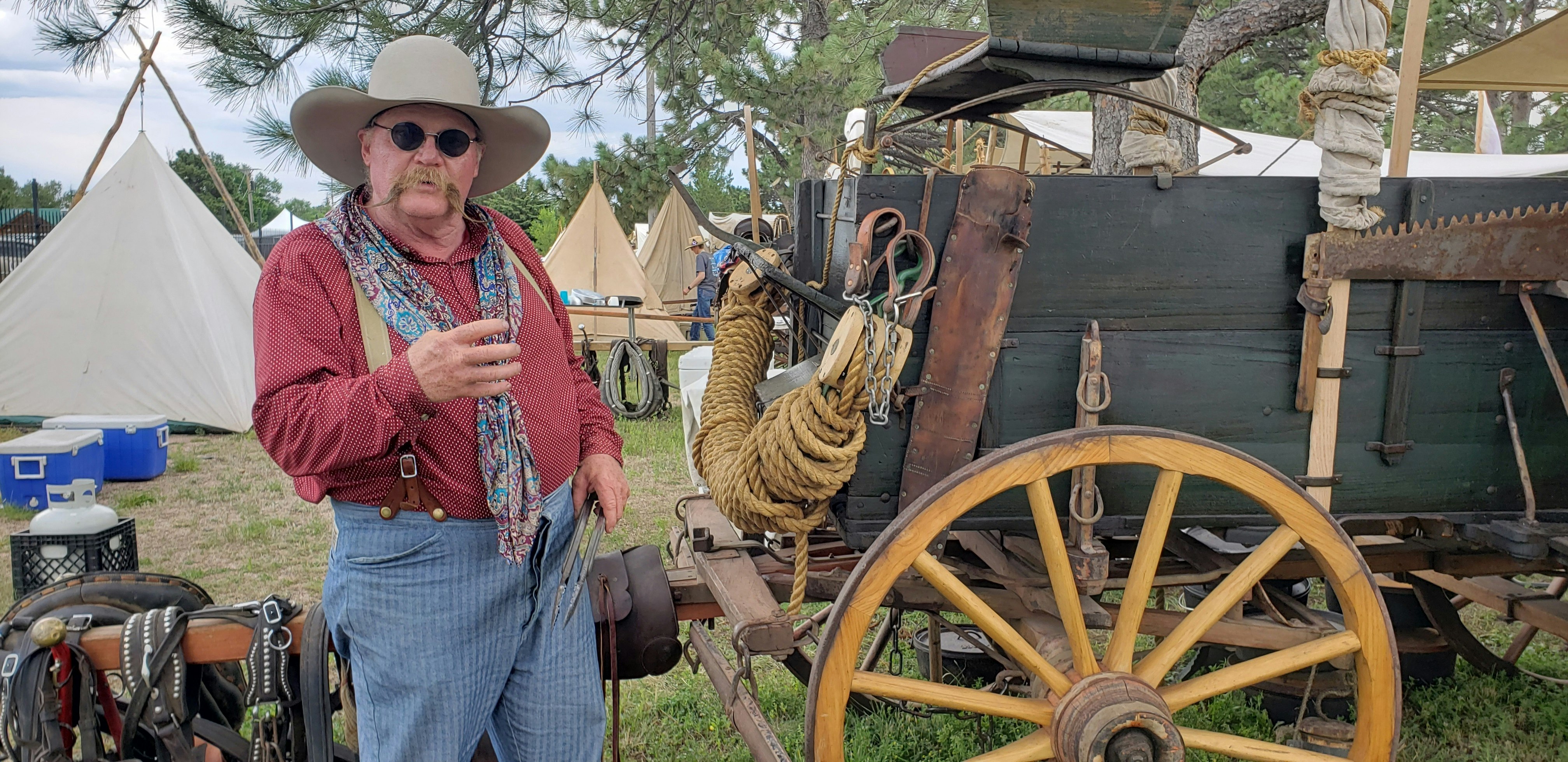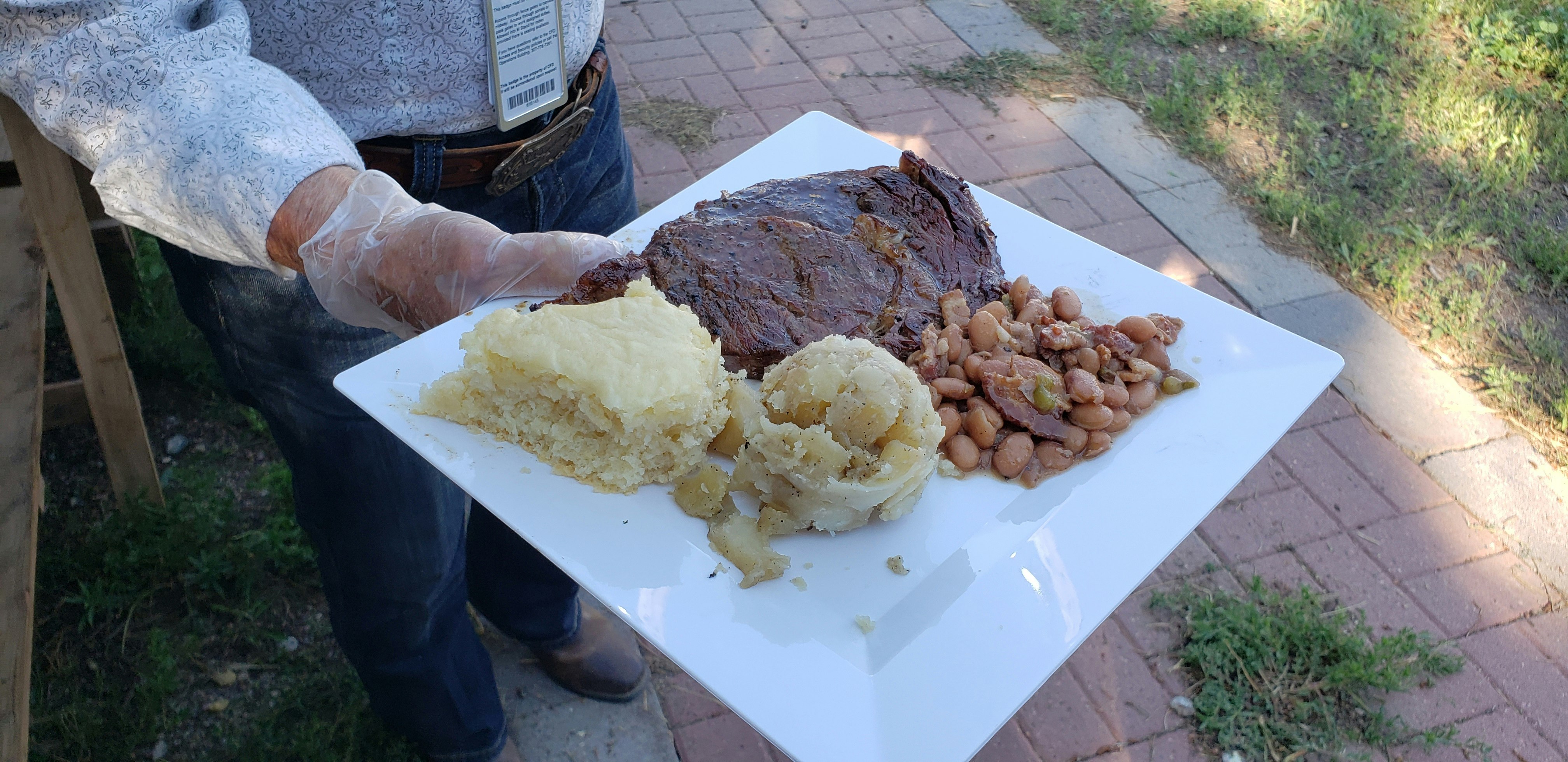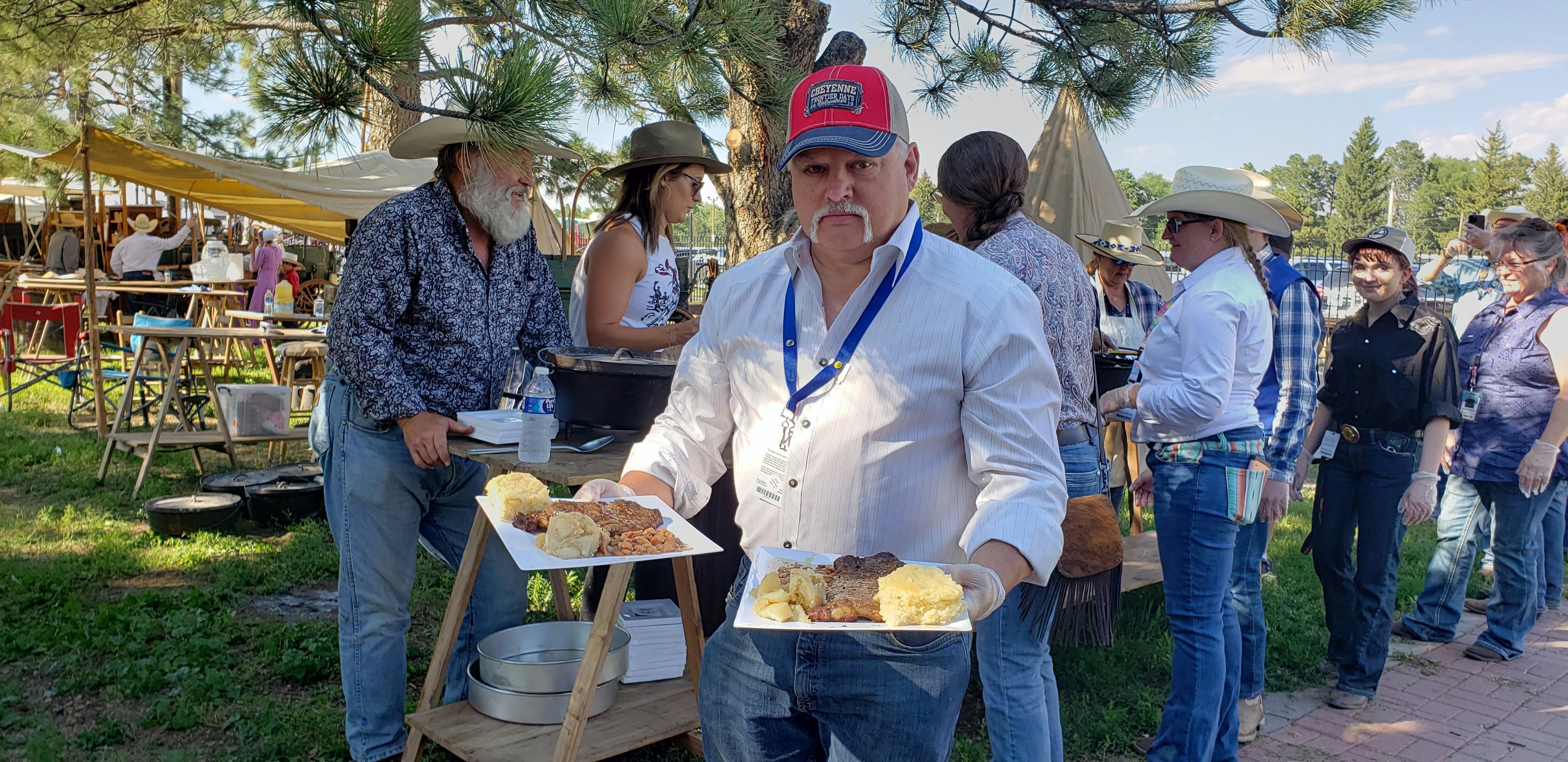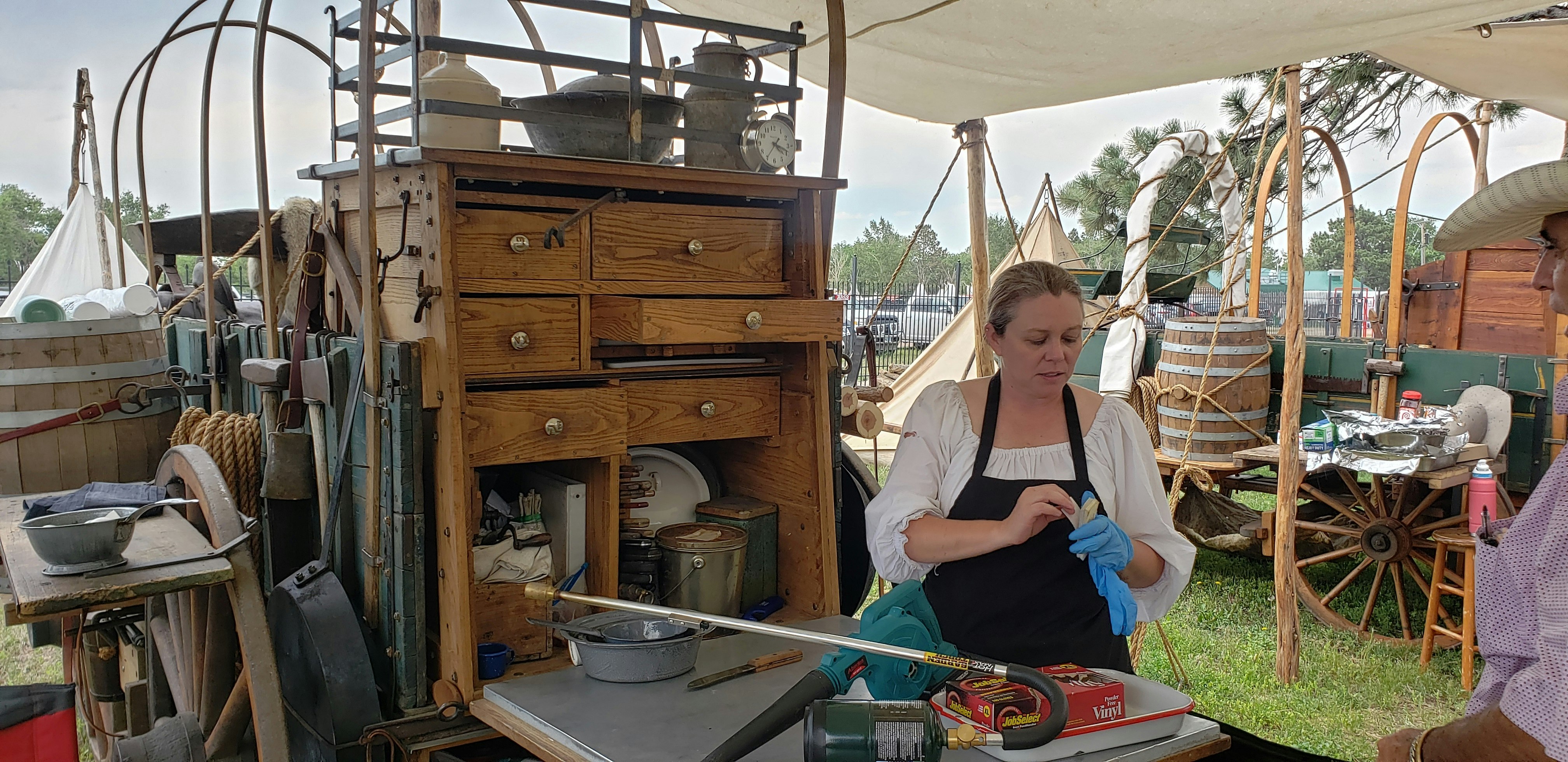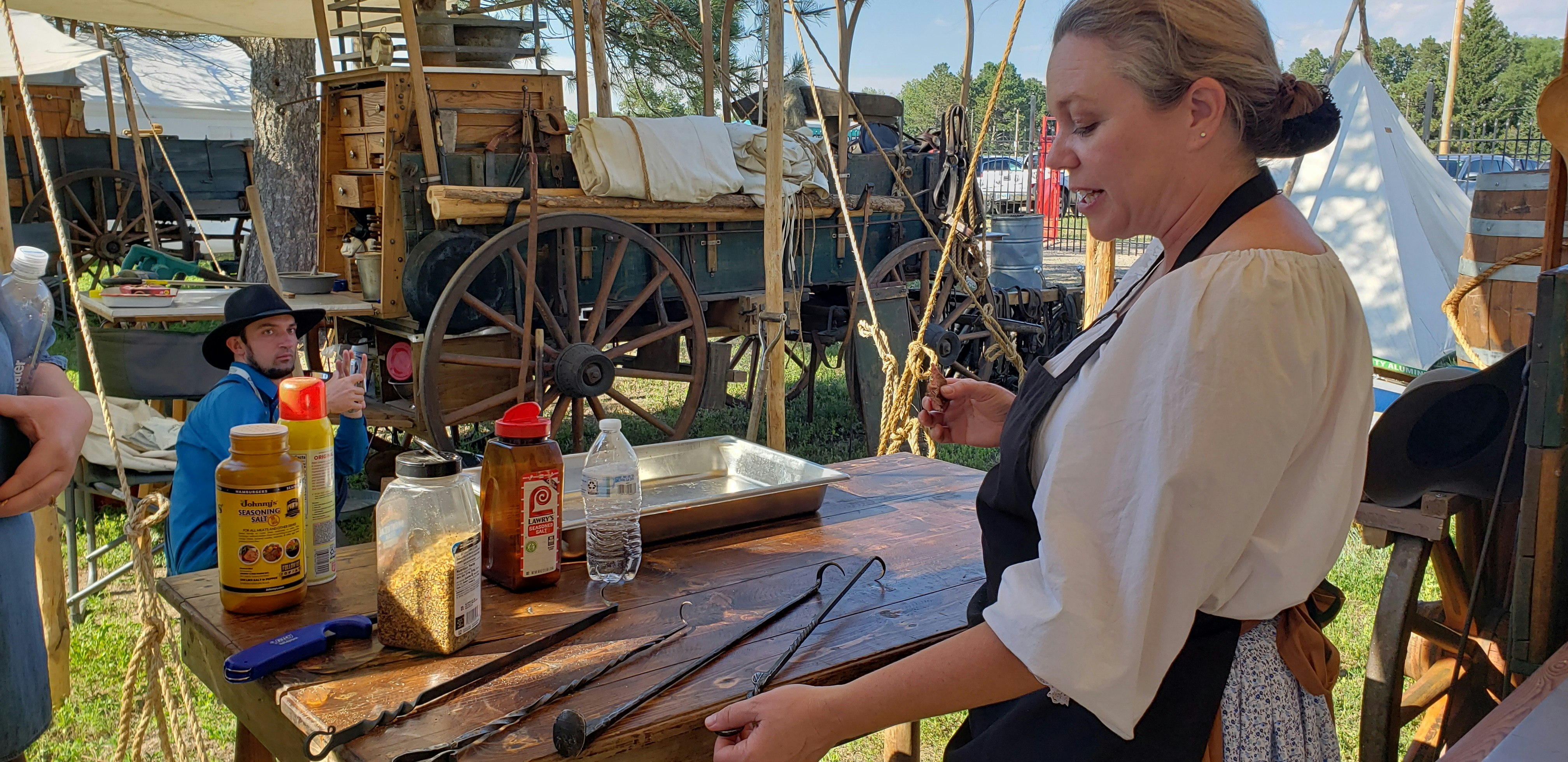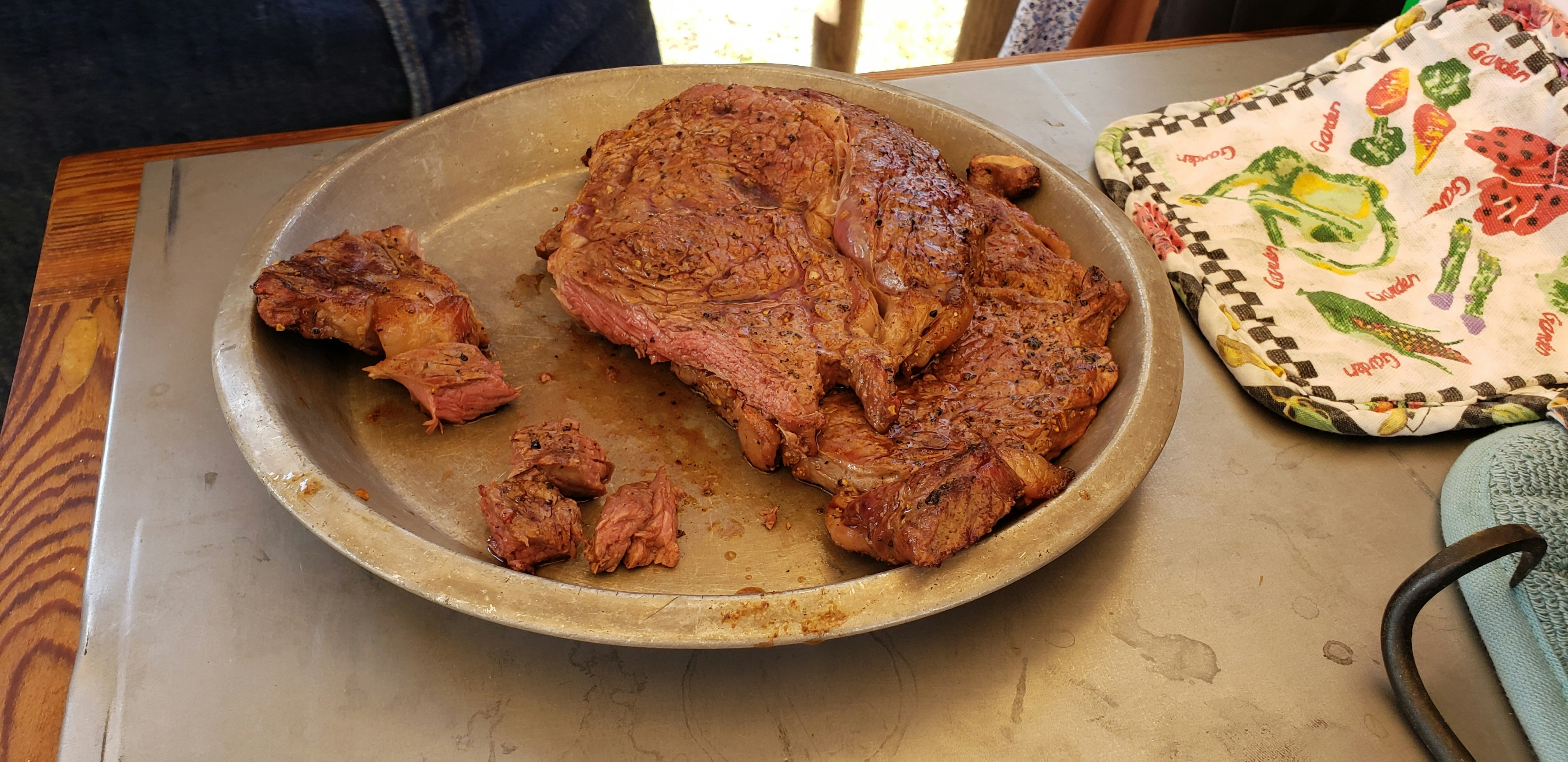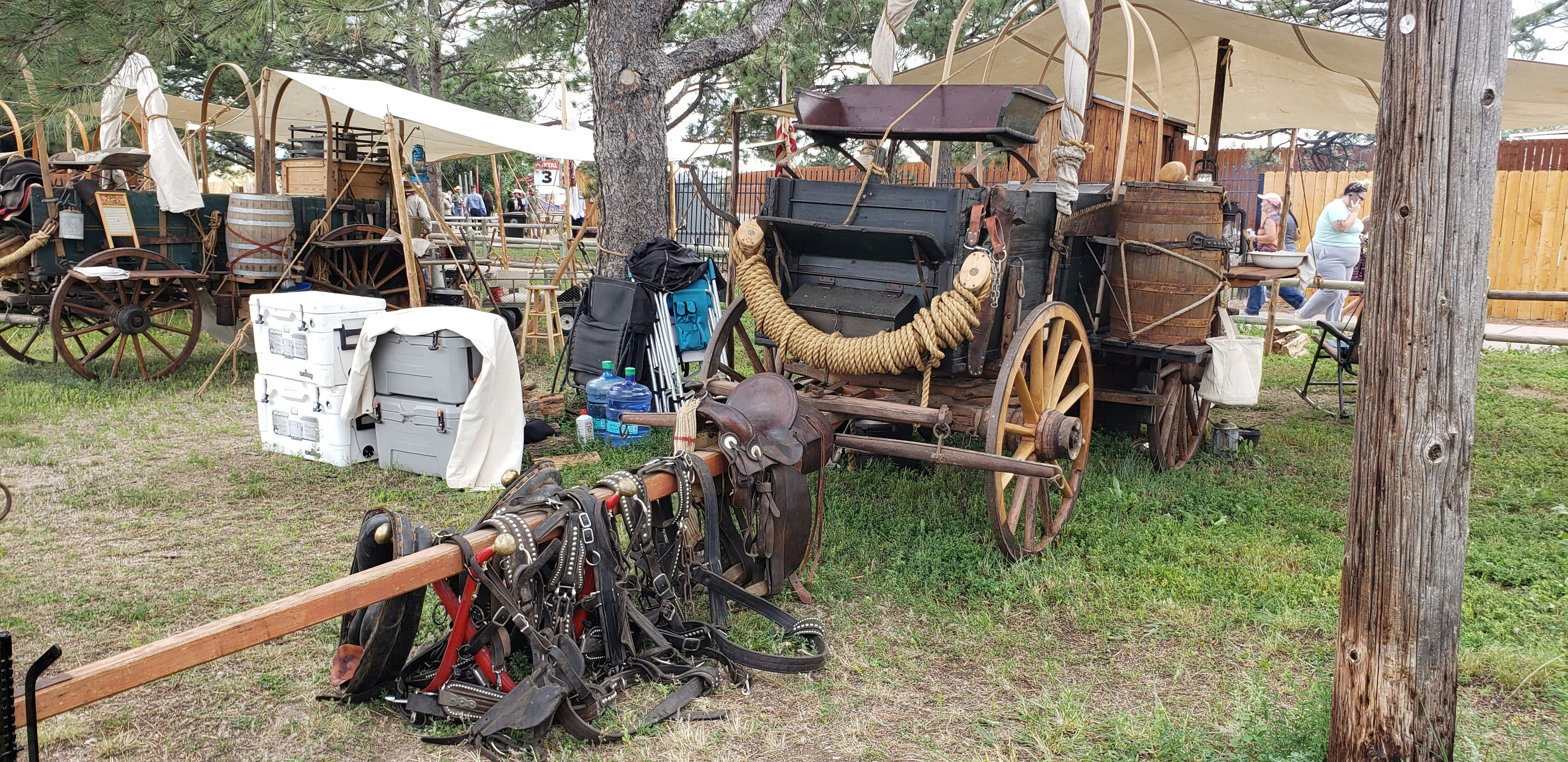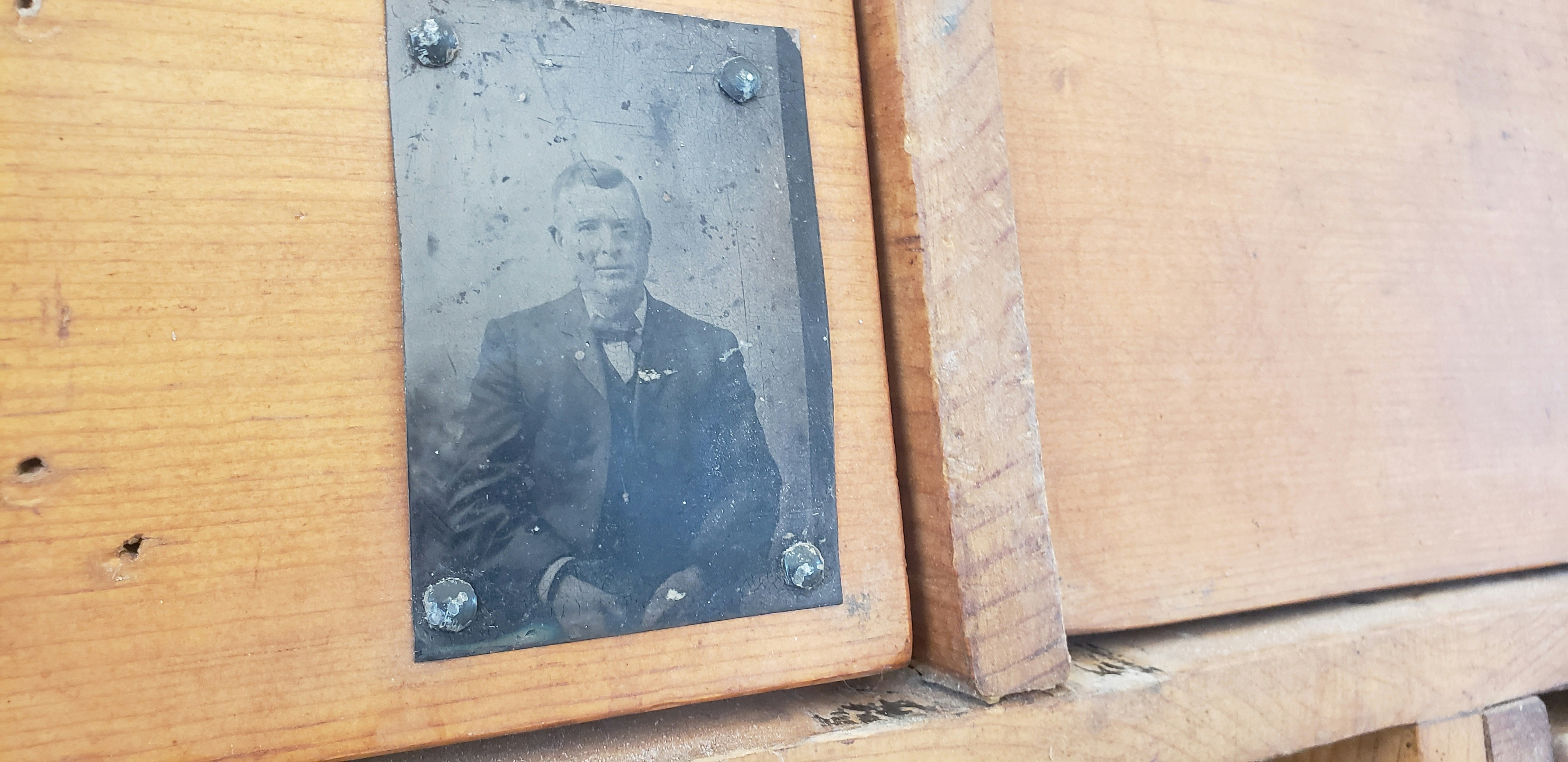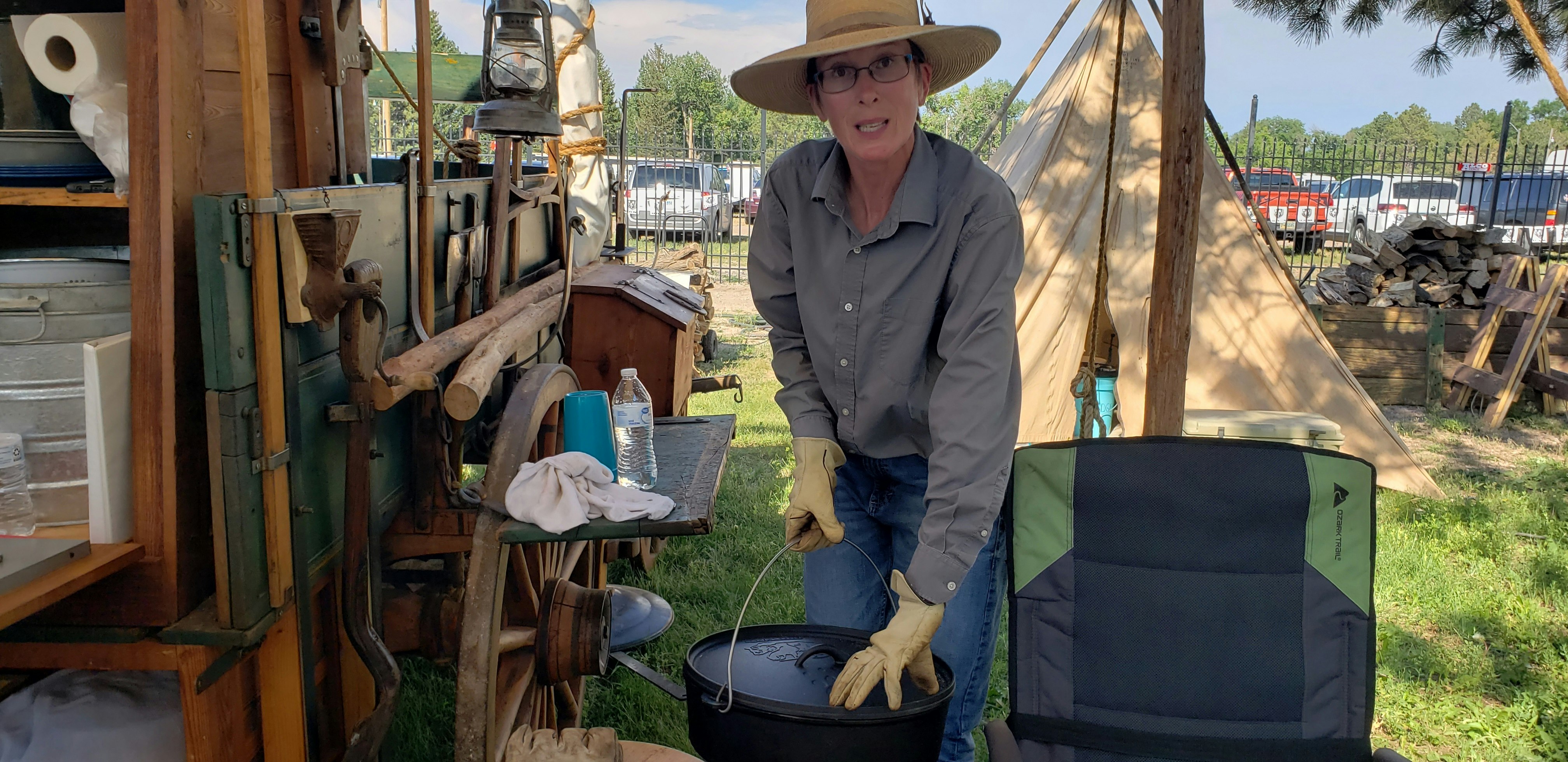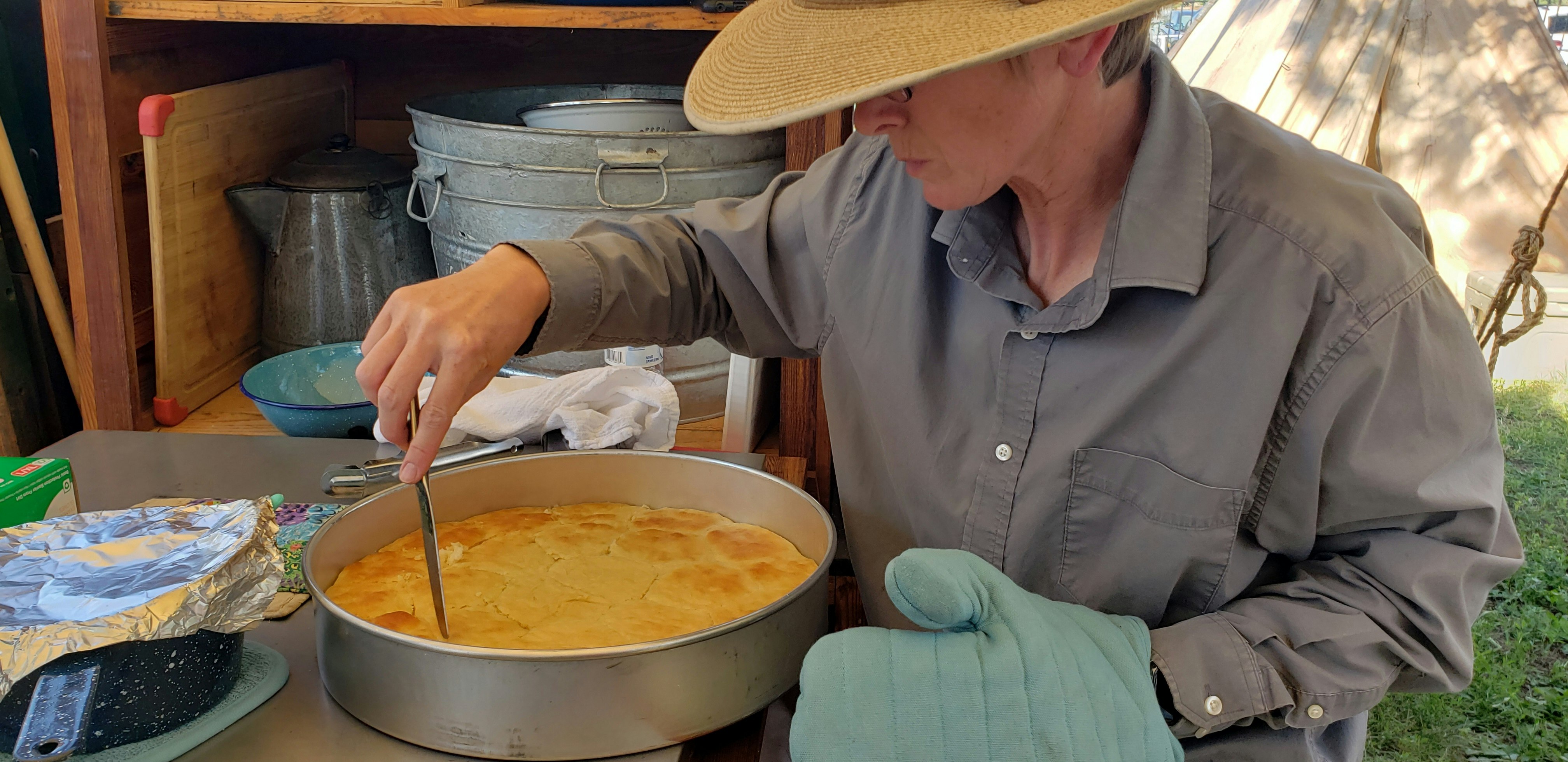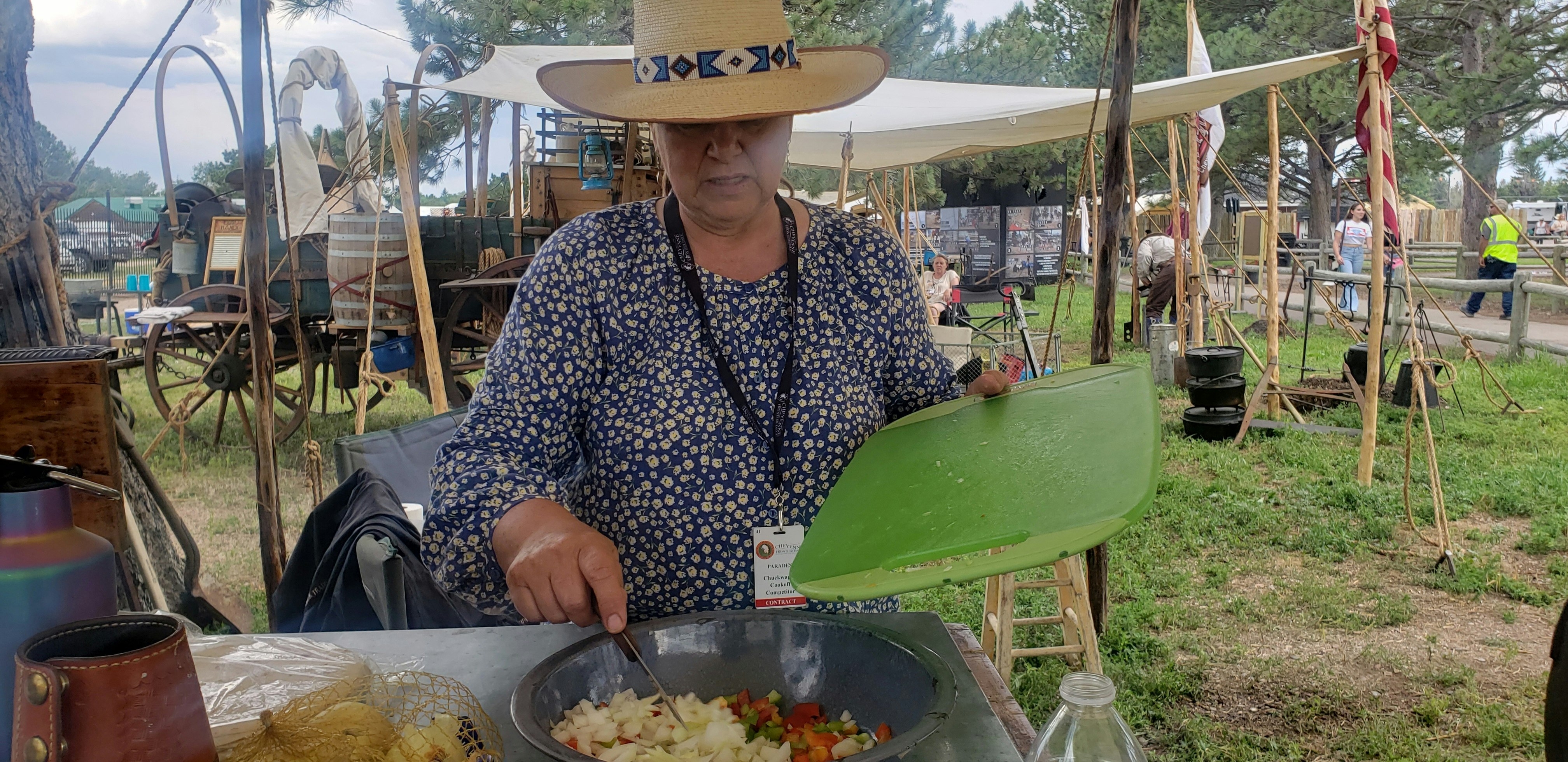CHEYENNE — Cheyenne Frontier Days is world famous for its great rodeo, the “Daddy of ‘Em All.”
But even people who are in a great rush to get to the arena to watch the rodeo events cannot help but turn their heads and stare as they pass by the chuckwagons, which are set up along the outer edge of Cheyenne Frontier Day’s Old Frontier Town — especially if it’s dinner time.
Old Frontier Town is where the petting zoo, games, artisans, exhibits, guest characters and the Sidewinder Saloon are.
As the crowd gathers to watch the chuckwagon cooks in action, the cell phones come out to take videos and photos of the early 1900s coming to life.
This fascination is something Tammy Fleischacker and Michael Engelbrecht, from Cheyenne Wells, Colorado, understand well. It’s what hooked them on chuckwagon cooking.
The couple is among the 10 chuckwagon teams invited to participate in the Cheyenne Frontier Days chuckwagon encampment and cook-off.
“(Our) original camp cooking started by watching Lonesome Dove years ago. We saw the guys cooking biscuits and we said, ‘Hey, we’ve got to try and see if we can do that,’” Engelbrecht said. “So, we started with one Dutch oven and cooking biscuits. We burned up a lot (of biscuits) before we figured it out.”
Today the couple owns 20 Dutch ovens in sizes that start at 8 inches and range up to 22 inches. And they can cook a lot more than biscuits these days.
High-end steaks, cobblers, mashed potatoes, corn — just about anything you can think of, they have cooked over an open fire, using nothing more than the cooking implements of a bygone era.
Ancient Western Cooking Secrets
One of the keys to cooking over an open campfire is a spice that can’t be purchased in a grocery store.
That spice is patience.
“You can’t get it too hot too quick,” Englebrecht said. “You’ve got to take your time and read the weather.”
The way the wind is blowing can make a fire burn hotter, but it can also carry heat away from the food as well.
“You have to think about what the wind is doing and really check your cooking,” Meredith Smith, from Kim, Colorado told Cowboy State Daily.
She is also one of the cowboy cooks invited to be part of the chuckwagon encampment at Frontier Days. As are Rich and Deb Herman, who are from Cody. They believe an appropriate fire pit helps get things started off right.
“That helps concentrate the heat,” Rich Herman told Cowboy State Daily.
But even when a fire’s perfect, chuckwagon cooks can’t just put the food over a fire, set a timer, and walk away. Cooking over a campfire is a constant vigil, a constant battle with the elements, to ensure everything goes as it should.
“See, you might have a hotspot here,” Smith said, pointing at one side of a lid covering Dutch oven filled with biscuits. “If you leave (the lid) in that one spot, it’s gonna burn right there. So, you just want to rotate (the lid).”
There could also be hotspots under the Dutch oven from the coals. Smith will pick up the entire pot, rotating it from time to time, to ensure even heat and perfectly browned and fluffy sourdough biscuits.
The lack of modern conveniences takes a bit of getting used to, Smith said.
“You don’t have (those) out here,” she said. “That battery-operated or electrical grinder, for example. Prep takes a bit longer, and cleanup takes a bit longer. There’s no dishwashers out here.”
Chuckwagons Were Gamechangers
Chuckwagons are one of the inventions that helped cowboys extend their reach in the unsettled Western territory. Without them, America wouldn’t be what it is today.
Each chuckwagon at Cheyenne Frontier Days has been outfitted according to the 1900s turn-of-the-century, cattle drive era. In fact, there’s even a list of each and every item the chuckwagons should have to correctly represent the history.
All the chuckwagons have a rear box bolted onto the wagon with a hinged lid that, when lowered, provides a sturdy worktable. Behind that hinged lid hide shelves and drawers that hold food, cooking pots, utensils, washtubs — everything a mobile kitchen would need out on the range.
The remaining space in the chuckwagon was used for bedrolls and barrels of dry goods and water that would sustain the cattle drive on its long journey from Texas to New Mexico, Kansas, or even as far north as Wyoming.
Beneath the wagon, a cowhide was fastened to each corner to carry wood and cow chips for the cookfires.
There are also amenities like old-fashioned coffee grinders, barber tools, a saw blade for cutting wood and a saw blade for butchering any animals that the drive happened to come across along the way — although that would have been scarce.
Game wasn’t going to stick around the noise of a cattle drive, and a cowboy wouldn’t want to start a stampede by shooting at a wild animal, Herman told Cowboy state Daily.
They also wouldn’t have eaten their cattle along the way — with one exception.
“If a calf were born, they couldn’t keep up, so it would get slaughtered immediately,” Rich told Cowboy State Daily. “Then there would be what they called Son of a Bitch stew.”
Since such calves would have been small, every part of the calf was used, including the sweetbreads and other parts not typically eaten today. That made it more nutritious for the cowboys who were on low-protein rations like rice and beans.
Creative Variations
Within the Cheyenne Frontier Days chuckwagon contest specifications, there’s plenty of room for imagination, though, and each wagon has its own story.
“(Our wagon) is an 1895-era wagon,” Engelbrecht told Cowboy State Daily. “It’s a Weber wagon and it was just a regular old wagon that’s been turned into, we’ve modified it into a chuckwagon.”
Fleischacker loves that Engelbrecht engineered the top drawers to hang down so she can see into them without a step stool. Her father put her family’s cattle brands on the wagon, and there are antique saws from Engelbrecht’s grandfather’s shop.
Smith’s wagon is modeled after a Lamons wagon. Lamons was a Tennessee company that built wagons starting in 1868, on into the mid 1920s.
“We went to auctions and antique stores to find things for our wagon,” Smith said.
That includes an old-fashioned coffee grinder that works, as well as an old, oil and wick lantern.
A Wagon With Special History
The Hermans’ wagon is an authentic 1902 Peter Schuttler wagon.
“It’s an original,” Rich Herman told Cowboy State Daily. “It’s number 32 out of 250 registered with the American Chuck Wagon Association and it was actually a chuckwagon feeding cowboys up until about the late 1950s.”
The exact history of their chuckwagon is unknown, but the couple has been told it was used by three of the biggest ranches in Texas at some point.
Affixed to one of the wagon’s drawers is an old, tin-type photo. The couple believes that might be the first cook — or cookie as they were called then — to have used the old chuckwagon.
The wheels of this chuckwagon have been reinforced with steel, similar to how Charles Goodnight made all his wagons.
Goodnight started with an old Army Studebaker wagon, to which he bolted a big wooden box that would have compartments for utensils, bedding, food, and other gear the cookie would need to take care of the camp.
“The cook was the doctor, the psychologist, everything,” Rich Herman told Cowboy state Daily. “I mean he was everything to the cowboys. He gave them haircuts, helped them with their problems, and he was their doctor if they needed a doctor.”

The Taste Of History
The chuckwagon experience that’s available to the public at Cheyenne Frontier Days is one of the first things to sell out every year. That’s because the meal is simply delicious.
But even those who don’t get one of the coveted meals can still watch and appreciate what the cooks in the camp are doing, and that’s actually the point of the whole 10-day encampment, which culminates with a cookoff.
These cooks, who have traveled from Texas, Colorado, Wyoming, Montana and other places to be part of Cheyenne Frontier Days, have come because they want to keep American and Western history alive.
“Cheyenne Frontier Days has always been known for being one of the biggest, coolest competitions for chuckwagons,” Engelbrecht said. “So, when we got the opportunity to come up we did it.”
Whenever Fleischacker sees someone one looking at the camp with a quizzical look, she’s among the first to float over and start telling them all about how chuckwagons helped America become what it is today.
“Keeping the history alive, giving people an experience is part of the excitement of what we do,” Fleischacker said.
Smith enjoys reading about the era and thinking about how difficult life on the trail would have been.
“Getting up early, late nights cleaning up after the last meal,” she said. “They say the cookie was the best paid hand out there, which makes sense. He had to feed the crew, so he was very important for the cattle drives and moving meats to the railhead, so that the rest of the United States what it was then could enjoy a good steak.”
Herman, who works for a museum in Cody, has the same enthusiasm for keeping history alive, but feels it’s especially important to teach young people about this time period in American history.
“I like history and I like the cattle drive era,” he said. “Life is not all video games. And if you don’t know what your history is, what do you know about yourself or where you came from?”
Online
Renée Jean can be reached at renee@cowboystatedaily.com.

